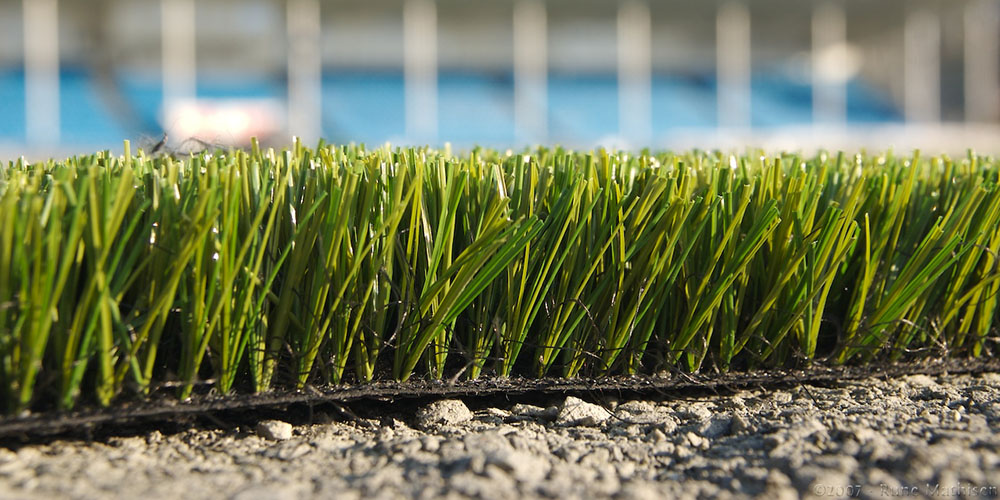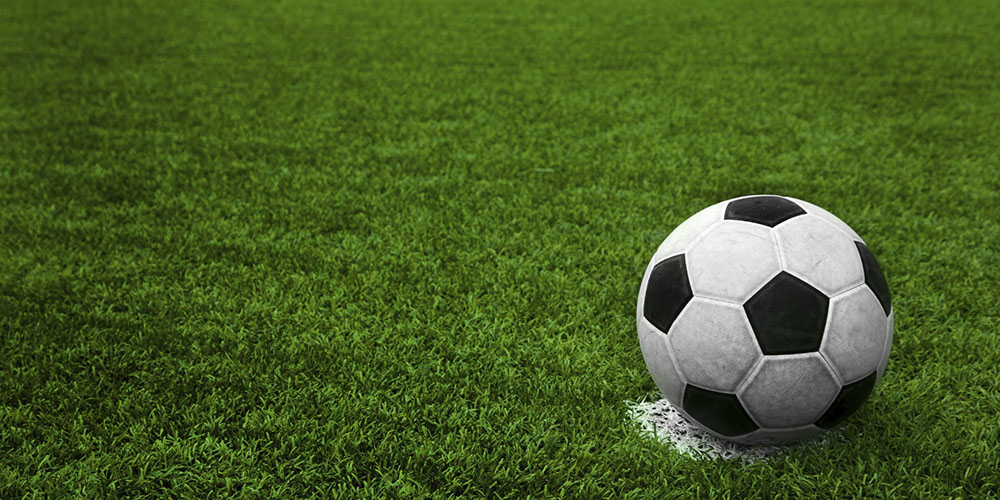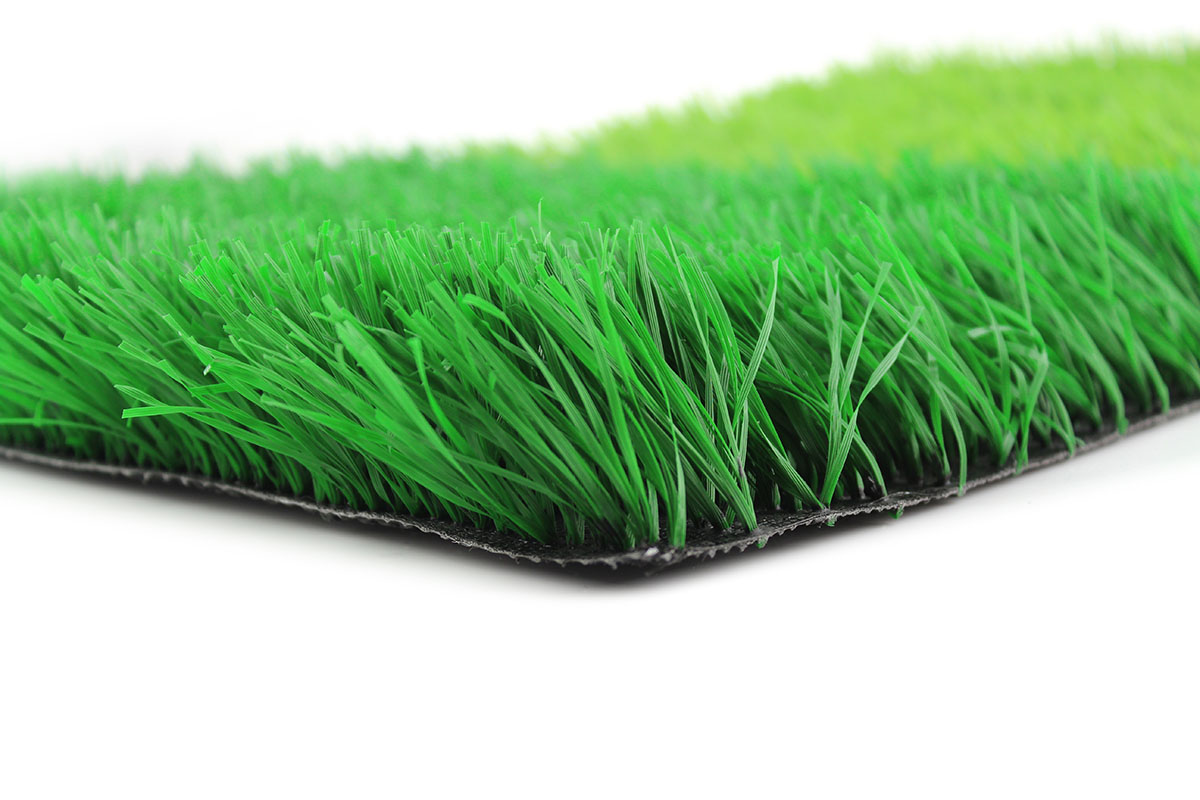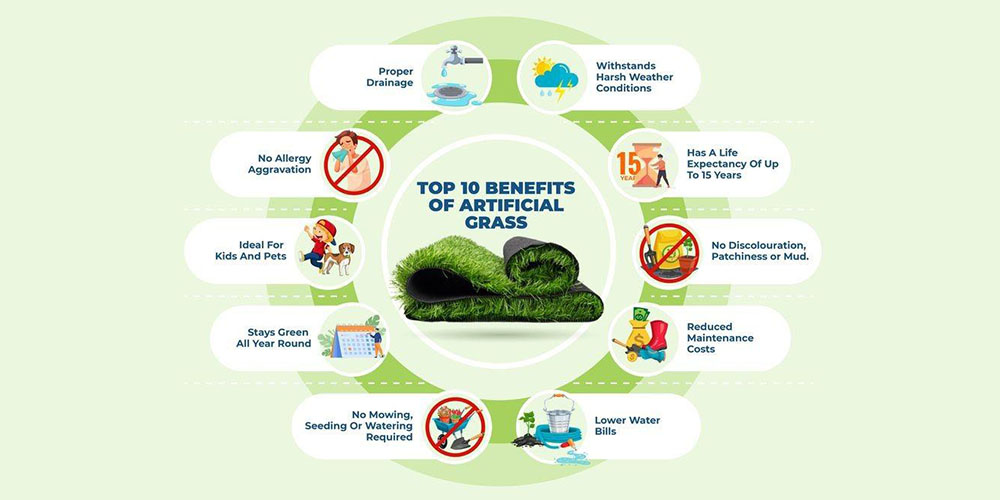
Artificial grass has become an increasingly popular choice for sports surfaces due to its durability, low maintenance requirements, and consistent playing conditions. With so many options available, it’s crucial to select the right artificial grass for your sports field. This comprehensive guide will cover the different types of artificial grass, popular sports played on artificial turf, factors to consider when choosing artificial grass, and the advantages it offers over natural grass.
Contents
Types of Artificial Grass for Sports
3G, 4G, and 5G Turf
The evolution of artificial grass has led to the development of 3G, 4G, and 5G turf systems:
- 3G turf: The third generation of artificial grass features longer fibers and an infill (usually sand and rubber) that simulates the properties of natural grass. It’s most suitable for contact sports like football, rugby, and American football.
- 4G turf: The fourth generation eliminates the need for infill, providing a more consistent surface with less maintenance. It’s ideal for sports like tennis, hockey, and multi-sport facilities.
- 5G turf: The most advanced option, 5G turf, combines the benefits of both 3G and 4G systems, offering a more realistic playing experience with even less maintenance.
Non-infill, Sand-filled, and Rubber-filled Systems
Artificial grass systems can be categorized based on their infill type:
- Non-infill systems: As the name suggests, these don’t require infill, making them low-maintenance and suitable for sports like tennis, hockey, and multi-sport facilities.
- Sand-filled systems: Sand-filled turf has a layer of sand that provides stability and support for the grass fibers. This type of surface is ideal for sports like hockey and tennis.
- Rubber-filled systems: A combination of sand and rubber granules make up the infill for rubber-filled systems, offering better shock absorption and making them suitable for contact sports like football, rugby, and American football.
Popular Sports Played on Artificial Grass

Football (Soccer)
Artificial grass has become a popular choice for football pitches due to its consistent playing surface, durability, and lower maintenance requirements compared to natural grass.
American Football
Artificial turf provides a safer, more consistent playing surface for American football, reducing the risk of injuries and allowing for better performance.
Tennis
The consistent bounce and reduced maintenance needs of artificial grass make it an excellent choice for tennis courts, both indoor and outdoor.
Golf
Golf courses and practice facilities have embraced artificial grass for its low maintenance, durability, and ability to mimic the playing characteristics of natural grass.
Hockey
Artificial grass offers a fast and consistent playing surface for field hockey, making it the preferred choice for many clubs and facilities.
Cricket
Cricket pitches and practice nets benefit from the use of artificial grass, providing consistent bounce and spin characteristics, as well as reduced maintenance requirements.
Rugby
Artificial grass rugby pitches offer improved safety, durability, and performance compared to natural grass, making them an increasingly popular choice for clubs and schools.
Multi-sport Facilities
Artificial grass is ideal for multi-sport facilities, as it provides a consistent and versatile playing surface suitable for a wide range of sports.
Factors to Consider When Choosing Artificial Grass for Sports

Pile Height
The length of the grass fibers, or pile height, is an important factor to consider when selecting artificial grass for sports. Pile height varies based on the sport being played and the desired playing characteristics.
Infill Type
Choose the appropriate infill type (non-infill, sand-filled, or rubber-filled) based on the specific requirements of the sport and the desired level of shock absorption, stability, and performance.
Pile Density
The density of the grass fibers affects the durability and playing characteristics of the artificial grass. Higher pile density typically offers better durability and a more realistic playing surface.
Yarn Type
The material used for the grass fibers can impact the durability, UV resistance, and performance of the artificial grass. Common yarn types include polyethylene, polypropylene, and nylon.
Durability
Consider the expected usage and lifespan of artificial grass when selecting the right product for your sports field. High-quality artificial grass can last for many years with proper maintenance.
UV Resistance
UV resistance is crucial for outdoor artificial grass installations, as it ensures the color and integrity of the turf will be maintained over time despite exposure to sunlight.
Drainage
Good drainage is essential for sports fields to prevent waterlogging and maintain a safe, consistent playing surface. Choose artificial grass with a reliable drainage system, such as perforated backing.
Maintenance Requirements
While artificial grass typically requires less maintenance than natural grass, some upkeep is still necessary. Consider the maintenance requirements of the artificial grass you choose, including infill replacement, brushing, and cleaning.
Safety
Safety should be a priority when selecting artificial grass for sports. Look for products that offer adequate shock absorption, as well as those that are non-toxic and free of harmful substances.
Benefits of Sports Artificial Grass

Consistent Playing Conditions
Artificial grass provides a consistent playing surface regardless of weather conditions, ensuring optimal performance and reducing the risk of injuries due to uneven or slippery surfaces.
Less Maintenance
Compared to natural grass, artificial turf requires less maintenance, such as watering, mowing, and fertilizing, saving time and resources for facility owners and operators.
Weather Resistance
Artificial grass can withstand various weather conditions, from heavy rain to extreme heat, without compromising the quality of the playing surface, making it a reliable option for outdoor sports facilities.
Lower Injury Risk
Artificial grass surfaces are designed to provide better shock absorption and reduce the risk of injuries, such as sprains and strains, compared to natural grass fields.
Eco-friendly
By requiring less water, pesticides, and fertilizers, artificial grass can be an environmentally friendly option for sports facilities, reducing their carbon footprint and overall environmental impact.
Relyir Artificial Grass: Your Ultimate Wholesale Supplier
In summary, artificial grass has become a popular choice for sports facilities due to its durability, low maintenance requirements, and consistent playing conditions. When choosing the right artificial grass for your sports field, it’s essential to consider factors such as pile height, infill type, yarn material, and safety.
Relyir Artificial Grass stands out as your ultimate wholesale supplier. We offer a wide range of high-quality artificial grass products, expert advice, and exceptional customer service. Our commitment to innovation, quality, and sustainability sets us apart from competitors, making Relyir the perfect choice for your artificial grass needs. Choose Relyir and experience the advantages of working with a professional manufacturer dedicated to exceeding your expectations.
FAQs
Are there any environmental benefits to using artificial grass for sports fields?
Artificial grass requires less water, pesticides, and fertilizers compared to natural grass, making it a more environmentally friendly option for sports facilities.
Which sports can be played on artificial grass surfaces?
Artificial grass is suitable for a wide range of sports, including football, American football, tennis, golf, hockey, cricket, rugby, and multi-sport facilities.
What factors should I consider when selecting artificial grass for sports use?
Consider factors such as pile height, infill type, pile density, yarn type, durability, UV resistance, drainage, maintenance requirements, and safety when choosing artificial grass for sports.
How do I choose the best pile height for my artificial grass sports field?
The optimal pile height depends on the sport being played and the desired playing characteristics. Consider factors such as ball bounce, surface stability, and shock absorption when selecting the appropriate pile height.
How does artificial grass compare to natural grass in terms of injury risk for athletes?
Artificial grass surfaces are designed to provide better shock absorption and reduce the risk of injuries, such as sprains and strains, compared to natural grass fields.
